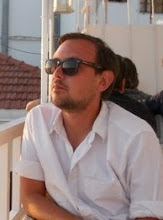Excerpts from my review of two stellar sports movies, today in "Now and Then," at Thompson on Hollywood:
With a homey, lived-in style and a strong command of performance, [Tom McCarthy's] three films behind the camera (the other two are The Station Agent and The Visitor) capture the particular anxiety of suburban life. And though he’s never lost his sense of humor, McCarthy’s progression from oddball character study to fully conceived narrative has displayed an impressive engagement with real people and real worries. Win Win only amplifies the trend: without quite meaning to, McCarthy has emerged as a master of middle-American quiet...
Unassumingly, the film builds to a clever understanding of recession-era blues: it’s hard to do what’s right when the spoils seem to go to those who don’t. As Terry says when Kyle gets disqualified from the big match, “We were right there, Mike. Right fuckin’ there. Now we got nothin’.” Nothin’ is something, though, if it means treating people with decency, a value at the heart of McCarthy’s style. Kyle wins his matches with a move the team calls “Whatever the Fuck It Takes,” but what wins in wrestling — pinning the opponent, crushing him, whatever the fuck it takes — is not always what wins in life.
It’s because of [its] glimpses outside the lines that I respond to Hoop Dreams, and why it upsets me, too. Not every kid from a bad school in a rough neighborhood can play hoops or throw touchdowns; though the non-athletes may be equally talented, intelligent, witty, and hard working, it just so happens that their area of expertise is something less valued in this country than being able to make a lay-up or a jump shot. Says a guidance counselor at the public high school to which Agee transfers, the system “doesn’t make sense”: “Once [private school students] walk in those doors, they expect to get their diploma and go to college…Whereas our students, to get out high school, for a lot of them, it’s an accomplishment.”
Despite its greatness, Hoop Dreams only alludes to the fact that for too many, life isn’t about hoops at all. It’s wholly about dreams — dreams deferred, denied, fulfilled, forgotten. It would be unfair to expect a film to do anything other than what it’s trying to do, but this documentary gets so close to the issue that not addressing it more fully seems a cop-out. So we’re back to question of whatever the fuck it takes, which in sport might be the right pin or the right three-pointer at the right moment. But in the question of what’s right, of what’s just, I’d like to think it takes something else entirely.
It’s because of [its] glimpses outside the lines that I respond to Hoop Dreams, and why it upsets me, too. Not every kid from a bad school in a rough neighborhood can play hoops or throw touchdowns; though the non-athletes may be equally talented, intelligent, witty, and hard working, it just so happens that their area of expertise is something less valued in this country than being able to make a lay-up or a jump shot. Says a guidance counselor at the public high school to which Agee transfers, the system “doesn’t make sense”: “Once [private school students] walk in those doors, they expect to get their diploma and go to college…Whereas our students, to get out high school, for a lot of them, it’s an accomplishment.”
Despite its greatness, Hoop Dreams only alludes to the fact that for too many, life isn’t about hoops at all. It’s wholly about dreams — dreams deferred, denied, fulfilled, forgotten. It would be unfair to expect a film to do anything other than what it’s trying to do, but this documentary gets so close to the issue that not addressing it more fully seems a cop-out. So we’re back to question of whatever the fuck it takes, which in sport might be the right pin or the right three-pointer at the right moment. But in the question of what’s right, of what’s just, I’d like to think it takes something else entirely.















